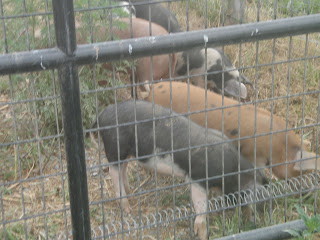I am pretty lucky in that I have access to quality, fresh, and mostly organic produce all day long. As a full time mom (trying to start a
business...), I have full control (most days) of what I and my kids eat. And lately I also usually prepare dinner, so I can make sure Chris is eating well then, too.
The giant gaping hole in this set up is that I can't make sure Chris is eating well while he
works Monday through Friday. It's not that he eats poorly, it's just that driving from customer to customer, and maybe to and from the shop in between, he doesn't have
time to eat. He has a morning part time job at a bakery- he eats a bagel and he is out of there by 8. Rarely does he get food on the road, and then he is home ravenous for dinner.
I hadn't really thought about this- Chris has never had to be told to eat, he is always hungry it seems. He has the appetite of a boy in high school, and always having been thin he eats what he wants, when he wants. But we were talking this past weekend when I realized he probably was not eating enough calorie-wise with his busy schedule during the work week. This can affect energy, productivity, blood sugar levels, etc.
So I have decided I am going to start packing lunch for him. But since one day's schedule is very different from the next, I don't know when or if he will be able to actually sit down and take his time to eat the food. Therefore, I am planning on only packing food that can be eaten with one hand and that is not super messy. This way, if he only has time to eat while driving, he is at least eating
something, right?
Here's what I have brainstormed so far:
carrot sticks
cucumber slices
dates
crackers and cheese
pita chips
raw vegan fruit and nut bars
Maybe peanut butter and jelly/jam/fruit butter/preserves (The key here would be spreading the peanut butter and fruit thinly, so as to avoid oozing and dripping.)
Maybe avocado (I think I would slice it onto sandwiches instead of mashing, again to avoid oozing and dripping. Can you tell I have thought really hard about this...? ha.)
When available, grapes, cherries, blueberries, strawberries (fruit that can be popped into the mouth- no dripping juices! He wants to look presentable for his customers, and a messy shirt would be the opposite of presentable, methinks.)
I might rarely send whole fruit like an orange, peach, etc. Citrus requires peeling. Peaches are drippy and juicy. Maybe apples would work- I can send it pre-washed, no peeling or other prep needed. Bananas might be ok, they aren't super juicy, and they are quick and easy to peel at stoplights, no?
I plan on making my own bars, bread, crackers and pita chips. These are all items I have made before, but I may have to work some recipes a bit to suit the need here- nothing can be too messy. I don't want to sabotage Chris by having him and his car covered in crumbs, haha.
Also, some of these foods will be geared to Chris's (and Aurelia's) tastes, but not necessarily mine. But that's ok, I have been making things they eat (but I only eat rarely) for a while now. Recently I made zucchini bread- I had some as a treat as did Aurelia, but Chris ate the bulk of it. I made biscuits (a big batch)- Aurelia has been having her peanut butter and jelly on it and Chris eats them with dinner or as a quick snack when he gets home. Making Chris's on-the-road lunches to suit his tastes (and not mine) are key.
Oh, and water. There have been days this summer when it has been especially warm. Sometimes Chris tunes at homes where the customer offers a drink. But sometimes, no one is home, or he tunes at schools, churches or nursing homes were there is no one to offer a drink. I want to make sure he has water.
Do you pack a lunch for anyone? What kind of foods do you send?
To read more about what Chris does for a living, check out
his blog! :)








.JPG)




.jpg)
.jpg)


































